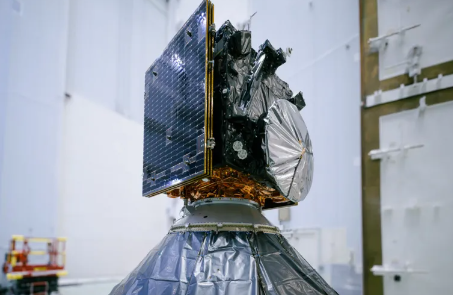Spacecraft Launched to Investigate Asteroid Diverted by NASA
 Gladson
Gladson
A spacecraft is en route to explore an asteroid that NASA intentionally diverted in 2022. The Hera craft lifted off from Cape Canaveral, Florida, at 10:52 local time (15:52 BST) on Monday as part of an international mission to assess the feasibility of preventing hazardous asteroids from colliding with Earth.
Hera's mission will focus on the asteroid Dimorphos, which NASA successfully impacted in 2022, altering its trajectory by a few meters. Although Dimorphos was not on a collision course with Earth, the test aimed to determine if space agencies could change an asteroid’s path in the event of a real threat.
The Hera spacecraft is expected to reach Dimorphos, located approximately seven million miles away, in December 2026. This mission, led by the European Space Agency, builds on NASA's Double Asteroid Redirection Test (DART).
Dimorphos is a 160-meter-wide moon that orbits the larger asteroid Didymos, forming a binary asteroid system. Upon arrival, Hera will analyze the size and depth of the impact crater left by the collision and deploy two cube-shaped probes to examine the asteroid’s composition and mass.
Naomi Murdoch, a scientist involved with the European Space Agency mission, emphasized the need to understand the physical properties of asteroids, including their composition—whether they are solid rock or sandy. This knowledge will aid in developing future strategies for intercepting other asteroids, which come in various sizes and shapes.
Currently, scientists do not foresee an imminent risk of a dinosaur-level extinction event from asteroid impacts. Large asteroids are easily detectable in space, but those targeted by DART and Hera, ranging from 100 to 200 meters wide, are challenging to identify from Earth.
Historically, smaller asteroids have caused significant damage. For instance, in 2013, a house-sized asteroid exploded over Chelyabinsk, Russia, injuring over 1,600 people and damaging buildings across a wide area.
The ultimate goal is to create a system that minimizes damage from potential asteroid impacts. “It’s not about avoiding human extinction; it’s about mitigating damage,” said Prof. Murdoch. “The dinosaurs didn’t have a space program, but we do.”
Despite NASA’s success in altering the course of one asteroid, scientists caution that intercepting other asteroids may not be straightforward. Detecting an incoming asteroid threat remains crucial for effective intervention.
As Hera embarks on its mission, it symbolizes a proactive approach to planetary defense against potential celestial threats.
Subscribe to my newsletter
Read articles from Gladson directly inside your inbox. Subscribe to the newsletter, and don't miss out.
Written by
